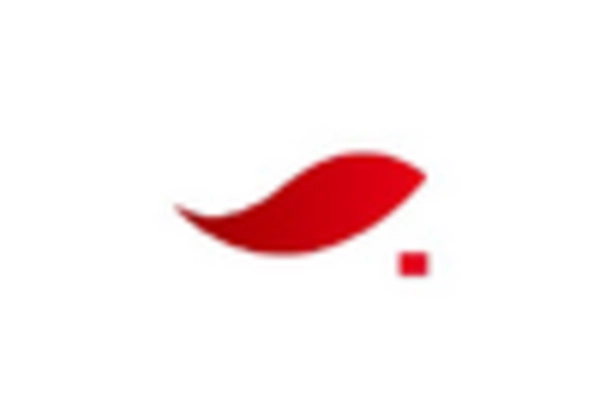The Architectural Membrane Market is currently characterized by a dynamic competitive landscape, driven by increasing demand for lightweight, durable, and aesthetically pleasing building materials. Key players are actively engaging in strategies that emphasize innovation, sustainability, and regional expansion. Companies such as Serge Ferrari (France) and Sika AG (Switzerland) are at the forefront, focusing on product development and strategic partnerships to enhance their market presence. This collective emphasis on innovation and sustainability appears to be shaping a competitive environment that prioritizes advanced materials and eco-friendly solutions, thereby attracting a diverse clientele across various sectors.
In terms of business tactics, companies are increasingly localizing manufacturing to reduce lead times and optimize supply chains. The market structure is moderately fragmented, with several players vying for market share, yet a few dominant firms are establishing a stronghold through strategic acquisitions and collaborations. This competitive structure allows for a variety of offerings, catering to different customer needs while also fostering innovation through competition among key players.
In August 2025, Serge Ferrari (France) announced the launch of a new line of eco-friendly architectural membranes designed to meet stringent sustainability standards. This strategic move not only aligns with global trends towards greener construction practices but also positions the company as a leader in sustainable building materials. By investing in environmentally friendly products, Serge Ferrari is likely to enhance its brand reputation and attract environmentally conscious clients, thereby solidifying its market position.
In September 2025, Sika AG (Switzerland) expanded its production capabilities by acquiring a local manufacturing facility in Eastern Europe. This acquisition is significant as it allows Sika to streamline its supply chain and respond more effectively to regional market demands. The strategic expansion into Eastern Europe may also enable Sika to leverage lower production costs while enhancing its distribution network, thus improving its competitive edge in the region.
In July 2025, Mehler Texnologies (Germany) entered into a strategic partnership with a leading architectural firm to develop innovative membrane solutions for large-scale projects. This collaboration is indicative of a broader trend where companies are seeking to integrate their products into high-profile architectural designs. By aligning with prominent architects, Mehler Texnologies is likely to enhance its visibility and credibility in the market, potentially leading to increased sales and market share.
As of October 2025, the Architectural Membrane Market is witnessing trends that emphasize digitalization, sustainability, and the integration of advanced technologies such as AI. Strategic alliances are becoming increasingly important, as companies recognize the value of collaboration in driving innovation and enhancing product offerings. The competitive differentiation is expected to evolve, shifting from traditional price-based competition to a focus on technological advancements, innovative solutions, and reliable supply chains. This transition suggests that companies that prioritize innovation and sustainability will likely emerge as leaders in the market.


















Leave a Comment